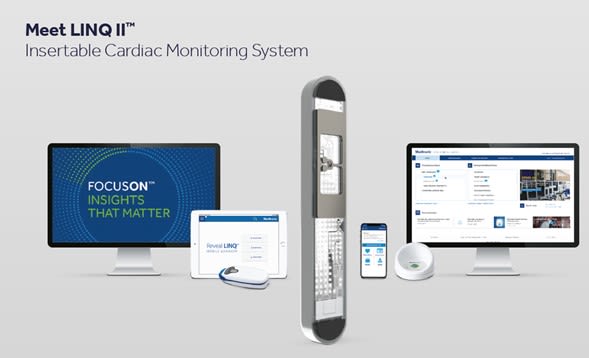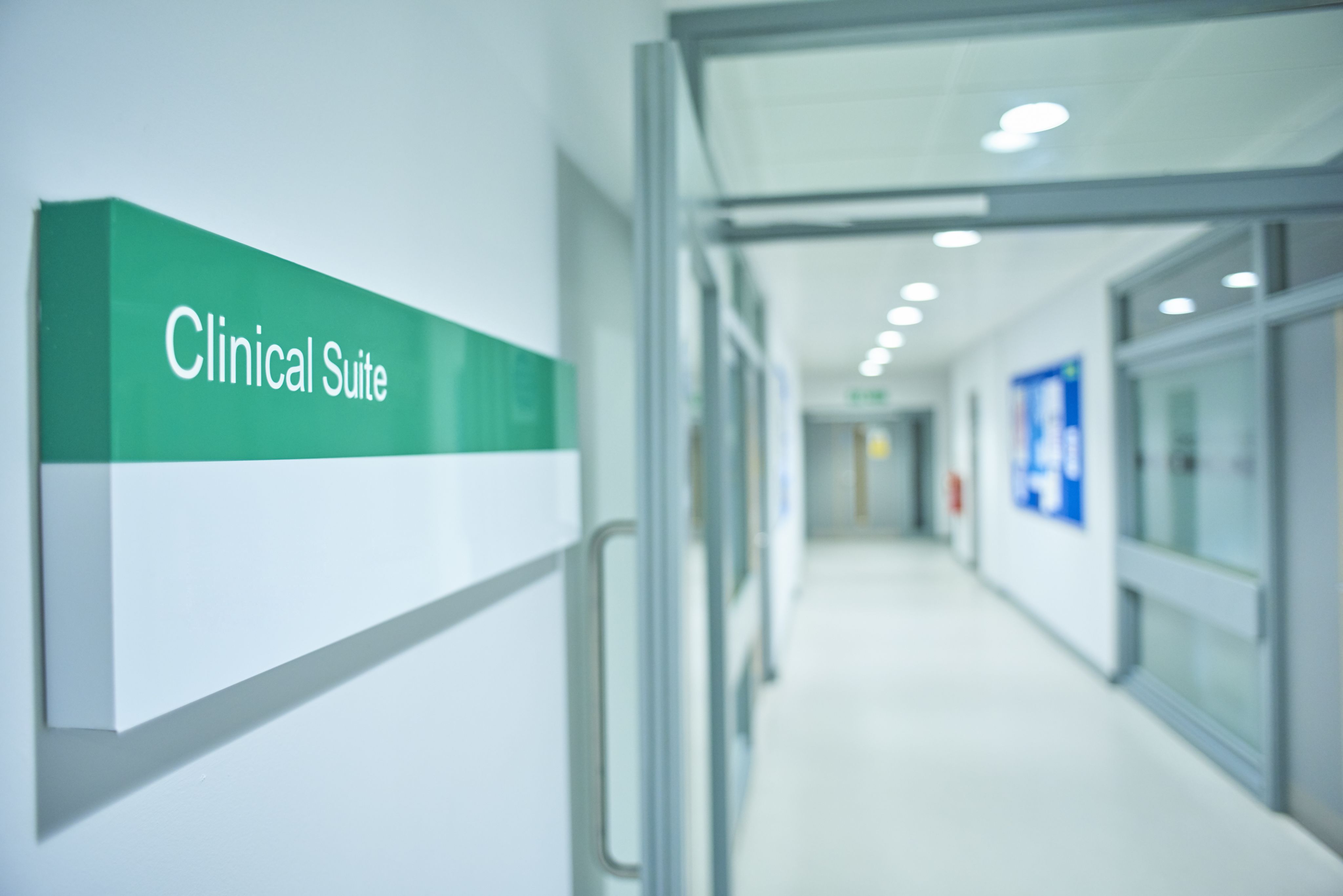Case study: Reveal LINQ - a digital health developer’s journey through NICE

At NICE, we intend to be at the forefront of the drive to bring new and better treatments to patients and service users quickly.
As part of this work, over the next 5 years, we’re placing significant focus on identifying and evaluating the most promising digital health technologies.
Through collaboration with our strategic partners, we’re supporting the identification, early engagement, approval, reimbursement and continued monitoring of new digital health technologies.
In this case study, we speak to Medtronic’s Mark Chapman and Lisa Jones who reflect on Reveal LINQ’sTM journey through our Diagnostics Assessment Programme.

Mark Chapman and Lisa Jones
Mark Chapman and Lisa Jones
“I’ve got the highest regard for NICE. The team was genuinely open-minded and collaborative.” Mark Chapman, health economics and commissioning director at Medtronic
“NICE is such a big part of what the NHS listens to. It’s so important. It was fantastic to have NICE guidance for our product saying this is the right thing to do.” Lisa Jones, product manager - cardiovascular diagnostics and services at Medtronic
About the technology


Reveal LINQTM is an implantable cardiac monitor. It is a small device implanted under the skin on a patient’s chest. It continuously monitors the heart’s rhythm for 3 years. If it detects atrial fibrillation (AF), it sends the data to the patient’s doctor. The doctor can check the data and decide if they need treatment.
Reveal LINQTM can reduce the number of strokes in people with AF, lead to fewer hospital visits and reassure patients that if they have AF, it will be quickly detected so treatment can begin. It is estimated that 7,000 strokes could be prevented and over 2,000 lives saved every year in England if people with AF are adequately treated.

NICE Diagnostics Assessment Programme

Our Diagnostics Assessment Programme evaluates new, innovative medical diagnostic technologies. The guidance produced following technology assessment helps NHS commissioners and clinicians make efficient, cost-effective and consistent decisions about adopting new and effective products, supporting innovation and improving healthcare outcomes.
Mark was keen to submit Reveal LINQTM, along with some of Medtronic’s other products, for NICE evaluation.
“I’m a big advocate for NICE,” he begins. “Medtronic is a global healthcare technology leader, employing more than 90,000 people across 150 countries. As the world’s largest medtech company, we fully support the work of NICE to improve outcomes in health and social care and appreciate the value NICE evaluations offer to those using our devices and therapies."
Lisa felt that a positive NICE evaluation would help to facilitate a consistent approach to adoption. “NHS trusts often find it challenging to assess the range of new health technologies available, she acknowledges. “A positive recommendation from NICE, affirming a product’s clinical and cost effectiveness, is so valuable.”
In 2018, NICE began work on diagnostics guidance for implantable cardiac monitors to detect atrial fibrillation after cryptogenic stroke. The guidance assessed 3 different monitors, including Reveal LINQTM.

Diagnostics advisory committee


Here at NICE, independent committees develop and update our guidance. Each committee is made up of a diverse range of members, often including people who use health and social care services, carers and health and social care practitioners.
Our diagnostics advisory committee meetings are open to the public. Holding them in public supports our commitment to having processes in place that are rigorous, open, and transparent.
Lisa was particularly pleased to observe the committee at work. “Attending NICE’s diagnostics advisory committee meeting was fascinating,” she comments. “It was the best day at work I’ve ever had! To be a fly on the wall, understand how the committee works and hear the diverse range of opinions was great. There were some strong patient voices in there too, which was fantastic.”

A positive recommendation

In September 2020, NICE published final guidance recommending Reveal LINQTM for use within the NHS. We recommend it for patients when their doctor suspects their stroke was caused by a heart rhythm problem, despite already having undergone non-invasive electrocardiogram (ECG) monitoring that failed to detect atrial fibrillation. At the time, our director of the Centre for Health Technology Evaluation, Meindert Boysen, said: “This device can provide a level of reassurance to those who live in fear of having another stroke and we believe Reveal LINQ is likely to be a cost-effective use of NHS resources.”
“I was so happy,” Lisa declares. “NICE is such a big part of what the NHS listens to. It’s so important. It was fantastic to have NICE guidance for our product saying this is the right thing to do.”
Mark agrees. “I was pleased when the guidance was published,” he says. “But the positive guidance is just the beginning. As a company, you then need to sell that positive recommendation to the NHS. The guidance is as valuable as you make it.”
Following guidance publication, Lisa worked with our content support service to make sure our recommendations were accurately reflected in Medtronic’s marketing materials. “NICE had worked hard to produce such a great piece of guidance,” Lisa enthuses. “The last thing I wanted to do was include inaccuracies in our communications. Having access to a service that could look at and check what I was doing was a positive experience. I was so grateful for the interaction I had with them.”

Making an impact

The challenges of the COVID-19 pandemic undoubtedly hindered NHS adoption of Reveal LINQTM during 2020 and 2021. At a time when healthcare services were facing unprecedented challenges, setting up a new service for the long-term monitoring of suspected atrial fibrillation was no small task. And yet, since the guidance was published, 11 new hospitals have begun using Reveal LINQTM for eligible patients. In addition, many more centres that were already providing this service to their stroke patients were able to formalise their pathways in line with NICE guidance.

Recently, University College Hospital in London became one of the first centres in the UK to implant a Reveal LINQTM device within the stroke department rather than within the cardiac department. Because the technology is miniaturised and easily programmed from an iPad, a cardiologist no longer needs to implant the device. This helps with continuity of care as the patient can stay within the stroke department. “The first patient at University College Hospital to have their Reveal LINQTM fitted in this way was delighted,” Lisa concludes. “This development most likely would not have happened if it was not for the backing of NICE.”

Reveal LINQ images provided courtesy of Medtronic Inc.